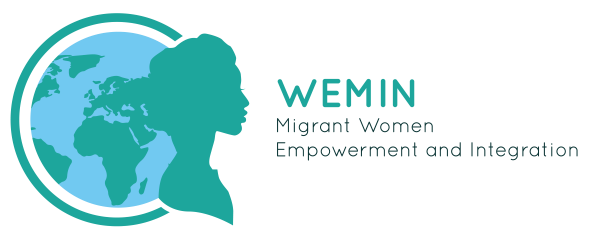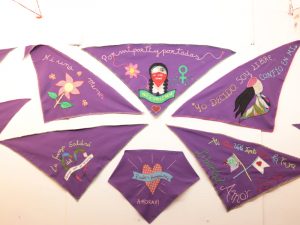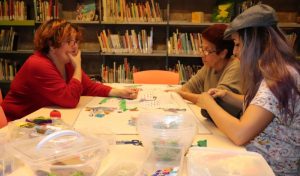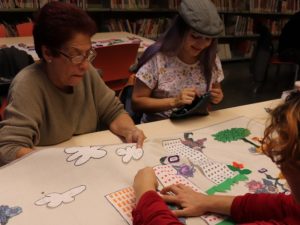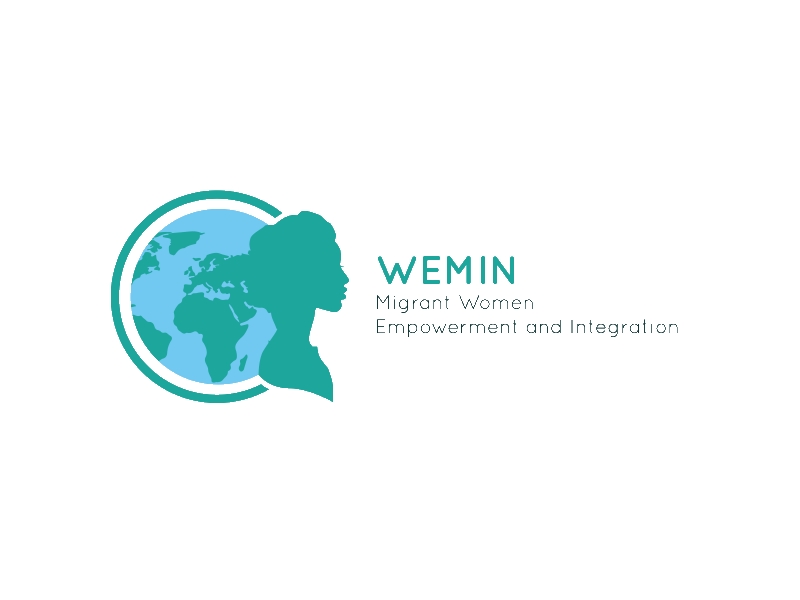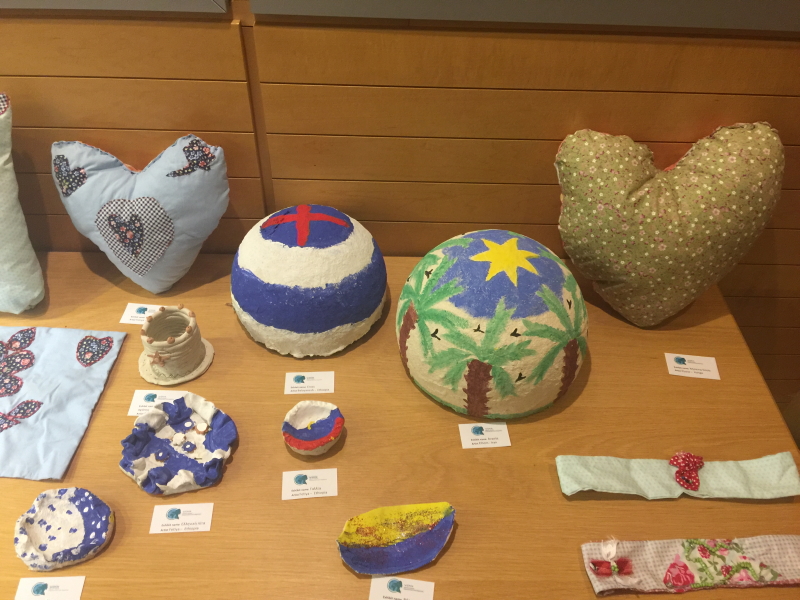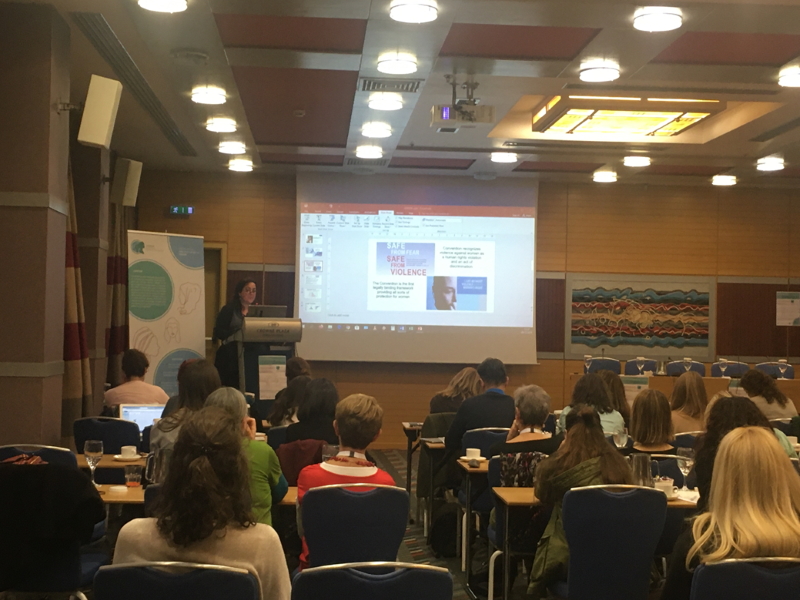
Wemin in Lisbon: Seed for the Future!
december 11, 2019
Wemin: a great challenge at all levels
december 13, 2019A tapestry of stories around the world
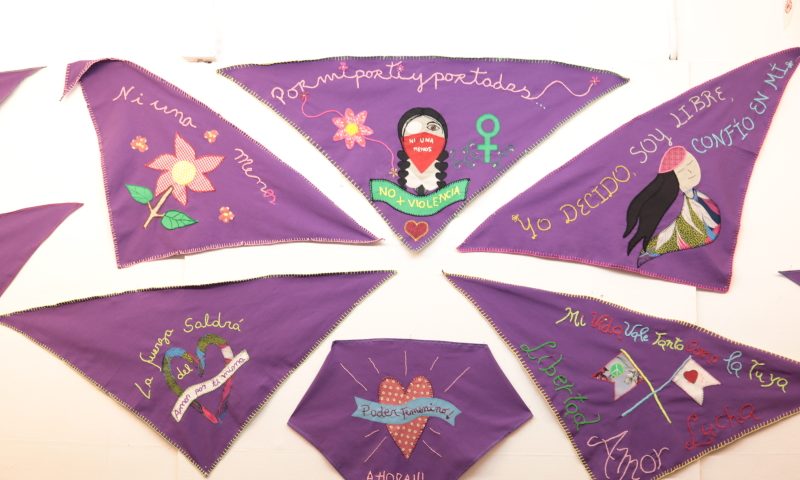
Maybá Calderon de Nieto, arrived to Barcelona some time ago, after her husband died in Venezuela, when her daughter asked her if she wanted to come to Barcelona.
She was a teacher in a kinder-garden and in a primary school, and she has participated in “Coser y Contar” workshop, realised in Coletic.
“ I never do stitching. With my hands I’ve done a little wallet and a keychain, and meantime we, the participants, were telling each other stories -about our family life-, and I felt them as a friends”, explains Calderón. While she keep on stitching, she explains that “ At Venezuela I teached in my home, at ‘la escuelita’, as my students name it”.
She explains us the origin of her name, Maybá. When her parents meet for the first time it was carnival; at that moment ‘Maybá’ song was a hit, interpreted by the Alci Sánchez orchestra. Four moths later, they get married and stayed together, for sixty years.
For eight sessions, different women’s around the world have joined together the “Closer I Cantar Workshop” at Santa Pau and Santa Creu Library, at Barcelona in Raval neighborhood. They have been stitching collectivily two textile art walls, with the objective to represent their memories, dreams and expectations of Barcelona city.
“ Crafts represent us, how we steeped by Barcelona and how Barcelona steeped on us”. Vanessa Quevedo Vega came from Colombia more than one year ago, because her husband got a job in Barcelona.
She is a fashion designer and in Colombia she was also a trainer. Nowadays she is designing her own brand of handmade, linked to social causes. She whants to cooperate with some more women and set up an atelier business. She knew about the workshop ‘Coser y Contar’ thanks to two entities : Fundació Surt and Fundació Comtal.
“ While I wait for my baby's birth, I take new challenges, review myself and connect with people with other concerns. To me, stitching with my new friends fells like I’m integrating in this new country” she says. She thinks that meeting of gender perspective, diverse cultures and stitching in this workshop has help her to find the approach he was looking for her own project.
“I have felt as a creative person again, I have felt that someone was listening to me. It's been a therapy space, too, as I'm in the final stage of my pregnancy." Interacting with others in diverse situations has allowed her to get to know the city deeper and to adapt to his new period.
Susagna Navó is “a person who sew objects and storyteller”, and has been the leader of the workshop. “I’m a seamstress and a storyteller, and both trades are part of my life. In the workshop, we have tried to make sewing as excuse to tell stories between women from different cultures”.
Despite the low language competences of some of the participants, specially those that have recently arrived to Catalonia, the fact of sharing the diversity of traditions (such as Halloween) has enabled a cultural exchange that has enriched the group.
The collective works are made with many hands, threads, colours and different fabrics: “through the fabric we can tell stories”. The participants leave their mark on each stitch: they tell us what the city give them, and the experiences that have had in their home-towns. That’s how they share countless knowledge. And the visitors of the old art school in Barcelona are testimonies of that, as the textile murals have been exposed there.
